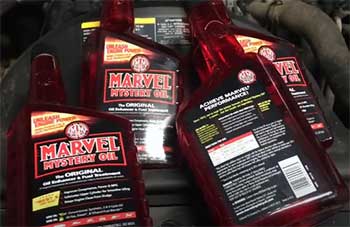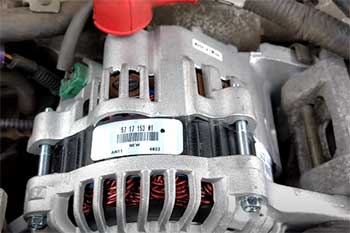Listen, if you’re anything like me, you’ve watched rust creep across your vehicle’s undercarriage and felt that sinking dread. Living in a place where salt coats the roads every winter, I knew I had to act fast.
That’s when I stumbled across Woolwax undercoating, and let me tell you—it’s a game-changer. This isn’t just another product; it’s a shield for your car, truck, or whatever you’re rolling in. With its thick, lanolin-based formula, it promises long-lasting protection.
So, stick with me here—I’m going to walk you through my journey with Woolwax, break down the pros and cons, and convince you to grab it before rust wins.
My First Ride With Woolwax: A Rust-Fighter’s Tale
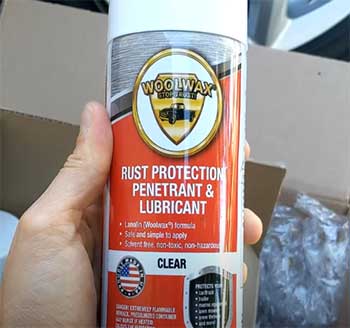
Picture this: it’s late fall, and I’m staring at my trusty Toyota Tacoma.
The frame’s got that telltale orange tinge starting to peek through, and I’m not about to let Minnesota’s salty roads turn it into a crumbling relic.
I’d heard the buzz about Woolwax—a lanolin-based undercoating that’s thicker than its competitors and doesn’t stink up your garage.
So, I decided to give it a shot. I ordered a gallon of the straw-colored stuff and the pro spray gun to go with it.
The day I applied it, I borrowed a friend’s lift—trust me, you’ll want one too.
I jacked the truck up, gave the underside a quick rinse with a garden hose to knock off loose dirt, and got to work.
The first thing that hit me was how easy it was to handle. It’s thick, almost like pudding, but once I got the hang of the pro gun at about 80 PSI, it sprayed on smooth and even. I coated the frame, fender wells, and every crevice I could reach.
Upside-down spraying? No problem—it clung like a champ without dripping into my hair. And the smell? Barely there. I’d braced myself for something harsh like other products I’d tried, but this was a pleasant surprise—just a faint, lotion-like whiff.
A week later, I took the truck out after a light snow. The roads were already gritty with salt, but when I checked underneath, the Woolwax was still there, holding strong. Fast forward a year, and I’m still impressed.
The rust hasn’t spread, and the coating’s intact, though I’m planning a touch-up soon. I even slapped some on my wife’s car and our ATV—why not, right? It’s become my go-to for anything metal that needs to survive winter. Was it perfect?
Not quite—I’ll get to that later—but my first ride with Woolwax left me feeling like I’d finally found a rust-fighting partner I could trust.
The Pros of Woolwax Undercoating: Why I’m Hooked?
Alright, let’s talk about what makes Woolwax stand out. I’ve been using it for a while now, and I’ve got some solid reasons why I keep coming back to it. Here’s what I love, broken down so you can see why it’s worth your time and money.
- Thick and Sticky Protection

One thing I noticed right away is how thick Woolwax is.
It’s not some runny spray that disappears after a rainstorm—it’s got real heft.
When I sprayed it on my truck, it stuck to the metal like glue, forming a barrier that salt and water couldn’t easily breach.
Compared to thinner options I’ve tried, this stuff feels like it’s built to last.
It’s perfect for those of us in harsh climates where rust is a constant threat.
- Creeps Into Every Nook
I’m no mechanic, but I know rust loves hiding in tight spots. Woolwax has this awesome ability to ooze into crevices I can’t even see. When I was coating my Tacoma’s frame, I could tell it was seeping into seams and joints, places where rust usually starts its dirty work.
It stays wet and active, which means it’s always on the job, protecting those hard-to-reach areas.
- No Nasty Smell
Let’s be real—some undercoatings smell like a chemical spill. Not Woolwax. When I sprayed it, I was ready to hold my breath, but it was more like a mild lotion scent than anything offensive.
My wife didn’t complain when I parked the truck in the garage, and that’s saying something. For a product this effective, the lack of stench is a huge win in my book.
- Easy to Apply (With the Right Tools)
I’ll admit, I was a little nervous about applying it myself, but with the pro gun and a lift, it was a breeze. The thick consistency means it doesn’t drip everywhere, and I could paint it on upside down without a mess.
If you’re a DIY type like me, you’ll appreciate how user-friendly it is once you get the setup right. It took me a couple of hours to coat my truck, and I felt like a pro by the end.
- Long-Lasting Rust Defense
After a full year of Minnesota winters, my truck’s undercarriage still looks solid. The Woolwax didn’t wash off, even with all the slush and salt I drove through. I’ve seen rust stall out where I applied it, and that’s the kind of staying power I need.
It’s not a one-and-done miracle, but it’s tough enough to keep me from worrying every season.
The Cons of Woolwax Undercoating: What Bugs Me
Now, I’m not here to sugarcoat things. Woolwax isn’t flawless, and I’ve run into a few hiccups that you should know about before you commit. Here’s where it falls short for me.
- It’s a Bear Without a Lift
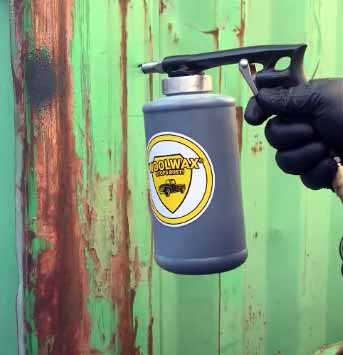
I lucked out with a friend’s lift, but if you’re stuck crawling under your vehicle on jack stands, good luck.
The thickness that makes Woolwax great also makes it tricky to apply evenly without full access.
I tried touching up a spot in my driveway once, and it was a backache and a half.
You’ll want a lift or a pro shop if you can swing it.
- Reapplication Isn’t Optional
I love that Woolwax lasts, but it’s not permanent. After a year, I noticed some spots thinning out, especially in high-wash areas like the wheel wells.
The manufacturer says it can go two years, but I’m not risking it—I reapply every fall. It’s not a huge hassle, but if you’re hoping for a set-it-and-forget-it fix, this isn’t it.
- Pricey Upfront Cost
Let’s talk cash. A gallon of Woolwax and the pro gun set me back more than I’d spent on cheaper sprays in the past. It’s not outrageous, but it’s an investment. For me, the protection justifies it, but if you’re on a tight budget, you might wince at the initial hit.
It does stretch pretty far, though—I had some left over after my truck.
- Can Clog the Wrong Gun
I learned this the hard way: don’t cheap out on the spray gun. I tried using an old undercoating gun I had lying around, and it clogged up fast. The pro gun from Woolwax is a must because this stuff is thick.
If you’re not prepared to spend on the right tools, you’ll be frustrated before you even start.
Maintenance Tips For Woolwax Undercoating: Keeping It Fresh
So, you’ve got Woolwax on your ride—awesome! But to keep it doing its job, you’ve got to give it some love. Here’s how I maintain mine, with tips I’ve picked up along the way to make sure it lasts as long as possible.
- Rinse, Don’t Blast: After a salty winter drive, I give my truck’s underside a quick rinse with a garden hose. It knocks off the grime without stripping the Woolwax. Whatever you do, don’t hit it with a pressure washer unless you want to redo the whole job. A gentle rinse keeps it clean and lets the coating stay put.
- Touch Up Annually: I’ve made it a ritual—every fall, I check the undercarriage and touch up any thin spots. It doesn’t take much, maybe a quart, and I focus on high-wear areas like the wheel wells and frame rails. Layering it over the old stuff works fine; no need to strip anything off. It’s quick, and it keeps the rust at bay.
- Warm It Up in Cold Weather: If you’re applying Woolwax in cooler temps—like I did one 40-degree day—it can get stubborn. I set the jug in a pot of warm water on a hot plate for a bit, and it flowed way easier through the gun. Don’t overheat it, just get it loose enough to spray smoothly. Makes a big difference.
- Store It Right: I had some Woolwax left over, so I sealed the jug tight and stashed it in my garage. Keep it cool and dry, and it’ll be ready for next time. I’ve heard it can settle, so I give it a good shake before using it again. No sense wasting a drop of this stuff—it’s too good.
- Check Hidden Spots: Every few months, I poke around with a flashlight to see how the Woolwax is holding up in tight spots like seams and frame rails. It tends to stay wet and active there, but if I spot any bare metal, I hit it with a quick spray. Staying proactive keeps the whole system working like it should.
Woolwax Vs. The Competition: How It Stacks Up?
Alright, let’s put Woolwax in the ring with ValuGard, Krown, Fluid Film, and LINE-X. I’ve rolled up my sleeves with a couple of these, swapped stories with folks who’ve tried the others, and I’m here to give you the full scoop. This isn’t just a quick glance—it’s me breaking down what I’ve seen, felt, and figured out, so you can pick what’s right for your ride.
Let’s get into it, one matchup at a time.
- Woolwax Vs. ValuGard Undercoating
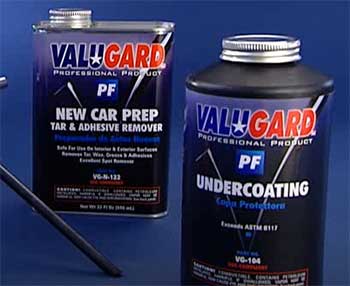
ValuGard’s a petroleum-based bruiser, built to lock out rust with a thick, waxy shield.
I slapped some on an old utility trailer a few years back, and it was like coating it in molasses—sticky, heavy, and damn effective at keeping water and salt away.
But here’s the catch: applying it was a wrestling match.
It’s stiffer than Woolwax, and I spent half an hour scrubbing it off my hands with degreaser.
Woolwax, with its lanolin magic, flows smoother through the pro gun—I sprayed my Tacoma without breaking a sweat.
ValuGard’s got a sharp, chemical stink that lingered in my garage for days; Woolwax barely whispers a lotion-like scent. Durability? ValuGard’s a long-hauler, perfect for stuff you park for seasons. But for me, Woolwax wins on application ease and livability—less mess, less fuss, same rust-kicking power.
- Woolwax Vs. Krown Undercoating
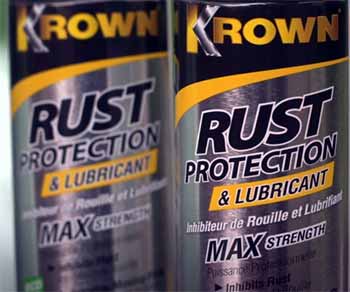
Krown’s the stealth ninja of undercoatings—thin, oily, and sneaky.
My buddy at work gets it sprayed on his Subaru every fall at a shop, and he swears it’s like giving his car a rust-proof force field.
It creeps into every seam, dries down to near-invisible, and keeps working without shouting about it.
I dig that low-profile vibe, but when I coated my truck with Woolwax, I loved seeing that thick, straw-colored layer sticking around—it’s like a visible promise against Minnesota’s salt onslaught.
Krown’s a dream if you’ve got a pro nearby; it’s less DIY-friendly since shops usually handle it.
Woolwax, though? I can tackle it myself, and it feels tougher through slush and snow. Krown might edge out on penetration, but Woolwax’s beefy presence keeps me loyal.
- Woolwax Vs. Fluid Film Undercoating
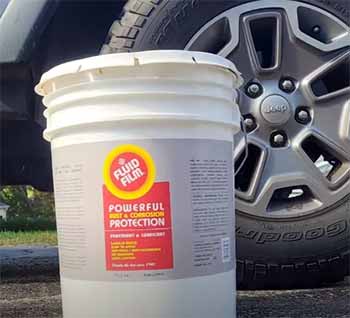
Fluid Film and Woolwax are siblings—both lanolin-based, both from the same crew—but they’ve got different personalities.
I used Fluid Film on a beat-up Jeep a while ago, and it was a breeze to spray.
That thin, runny texture slipped into tight spots like nobody’s business, and it didn’t clog my cheap gun.
But after a wet winter, I noticed it fading fast in splash zones like wheel wells.
Woolwax is the thicker, tougher brother—when I hit my Tacoma with it, it stuck like glue and laughed off a year of salt and grime.
Fluid Film’s lighter touch makes it forgiving for quick jobs or cramped areas, but Woolwax’s staying power is unreal.
I’ll give Fluid Film props for simplicity, but Woolwax is my pick when I need something that doesn’t budge.
- Woolwax Vs. LINE-X Undercoating

LINE-X is the tank of this lineup—rubberized, permanent, and built for war.
A guy I know got it on his F-150, and it’s like his undercarriage is wearing a bulletproof vest. It shrugs off rocks, salt, and anything else you throw at it, making it a beast for off-roaders or folks in brutal conditions.
I peeked underneath once, and it’s a solid, dry coat—no wet creep like Woolwax.
But here’s the rub: you need a pro to spray it, and it’s pricey—way more than a jug of Woolwax and a $50 gun. Plus, the application stinks like a paint booth; Woolwax is a gentle breeze by comparison.
LINE-X is overkill for my rust-focused needs—I don’t need rock armor, just salt defense. Woolwax gives me DIY control and solid protection without the heavy artillery feel.
Frequently Asked Questions (FAQ)
Got questions? I’ve got answers. Here’s what I’ve learned about Woolwax from using it and digging around.
From my experience, Woolwax holds up strong for about a year in tough conditions like Minnesota winters. The company says it can last two years, and I believe it in milder climates or enclosed areas like frame rails. I play it safe and touch up annually, but it’s still kicking after 12 months of salt and slush.
It doesn’t “stop” rust like a magic eraser—nothing does once it’s started—but it slows it way down. I’ve seen rust on my truck stall out where I applied Woolwax because it cuts off the moisture and oxygen rust needs to grow. You’ll want to knock off loose flakes first, though, for the best shot.
Tough call—it depends on you. For me, Woolwax tops the list because it’s thick, long-lasting, and doesn’t stink. Fluid Film’s great for tight spots, Cosmoline’s a beast for storage, and Krown’s a pro favorite. I’d say Woolwax wins for all-around rust defense in brutal winters, but pick what matches your ride and routine.
Yeah, a little. It stays wet, so dirt sticks to it over time, especially in exposed spots like wheel wells. I’ve noticed a grimy layer after a few months, but a quick rinse keeps it manageable. It’s a trade-off for the protection—you’re not showing off your undercarriage at a car show, right?
Wrap-Up: Get Woolwax and Save Your Ride
So, there you have it—my full rundown on Woolwax undercoating. After battling rust and testing this stuff firsthand, I’m sold. It’s thick, it lasts, and it’s saved my truck from the salt monster.
Sure, it’s got quirks, but the pros outweigh them big time. If you’re tired of watching your vehicle corrode, grab some Woolwax and take control.
Trust me, you won’t regret it—your ride deserves this kind of armor. Go get it now before winter sneaks up!
